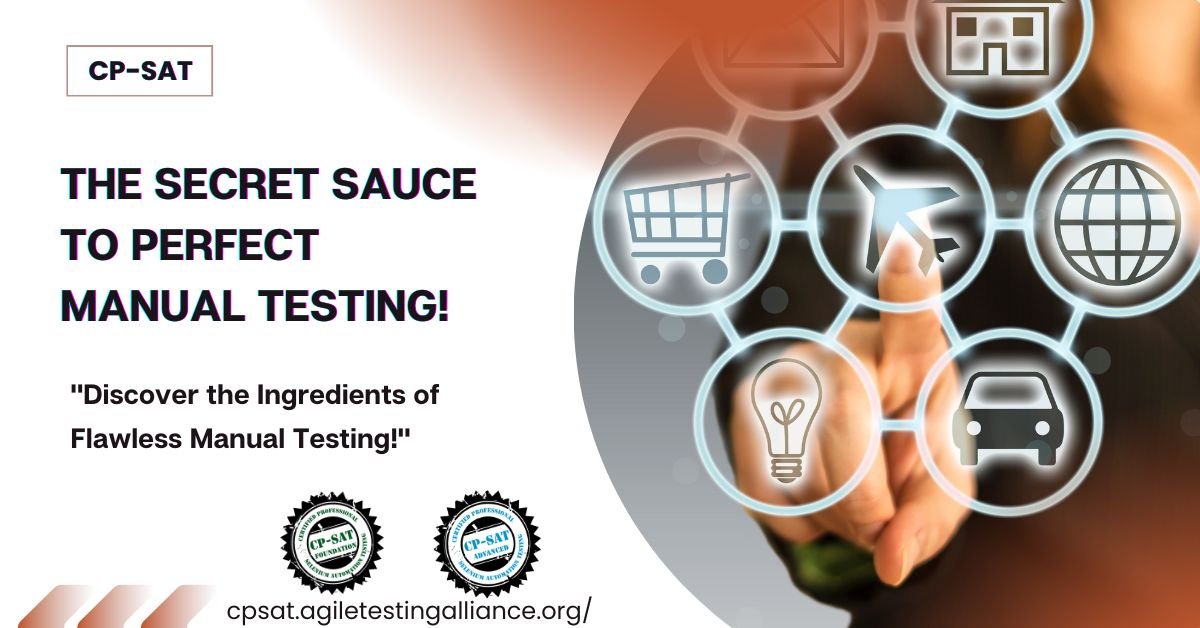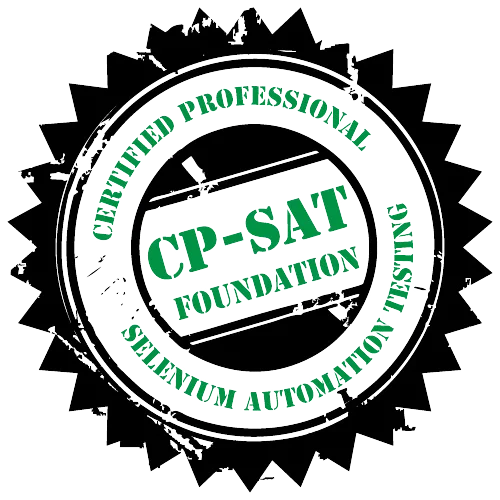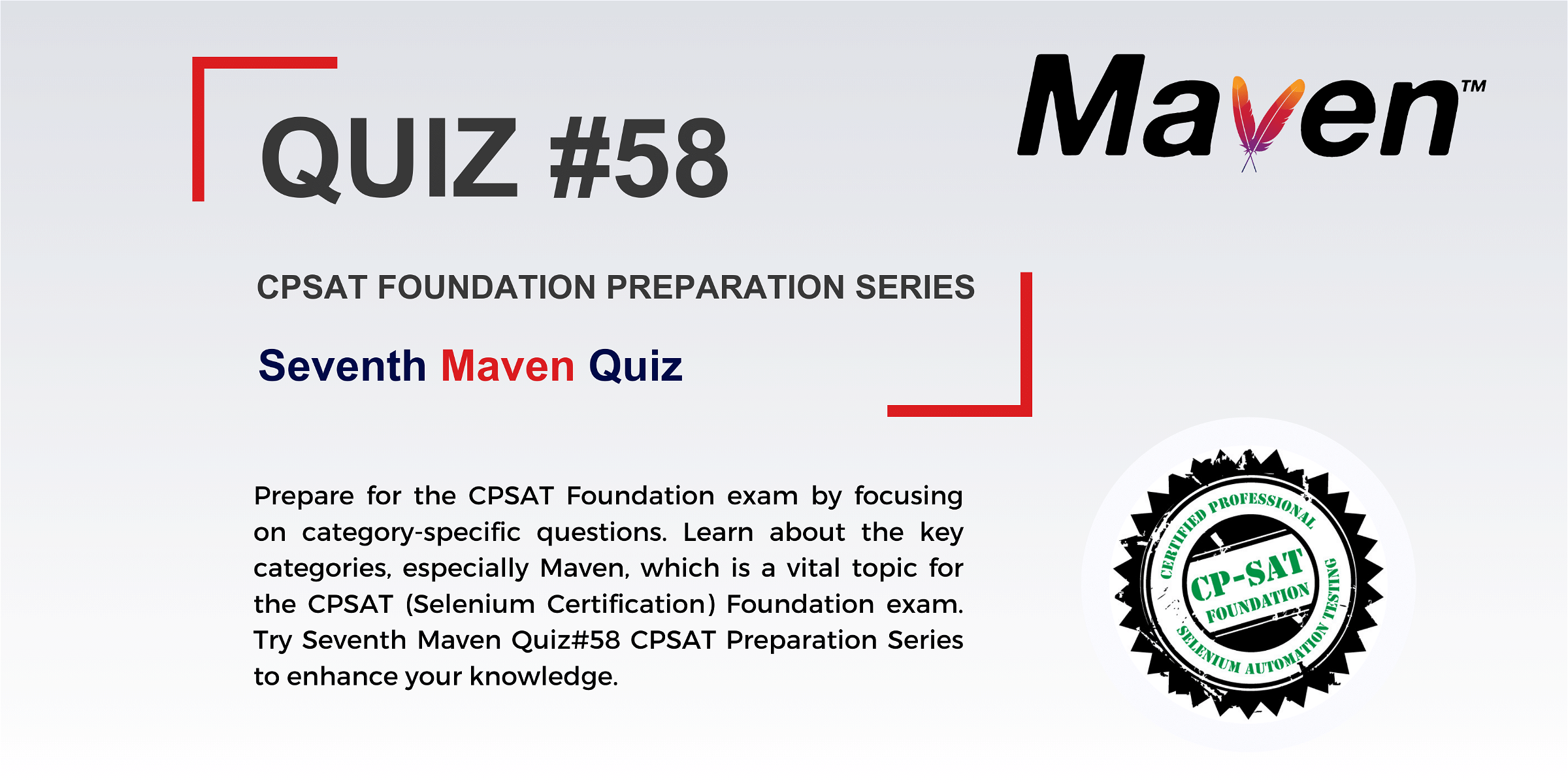
The Secret Sauce to Perfect Manual Testing!

Table of Contents
Welcome, aspiring testers and tech aficionados, to the definitive guide on manual testing—the craft that often takes a backseat in conversations dominated by automation but is an essential cornerstone in the software quality assurance landscape. If you’re a fresher or newcomer, you’re in for a treat because this article will demystify the so-called “less glamorous” aspect of testing and showcase why it’s indispensable in today’s dynamic and complex digital ecosystems. After all, there’s a reason why manual testing has withstood the test of time, even in our fast-paced Agile and DevOps environments.
Now, let’s address the elephant in the room. Automation is fantastic; it’s the buzzword of the decade for a reason. It can perform tasks at breakneck speeds, it doesn’t get tired, and it’s devoid of human error. But—and this is a crucial ‘but’—automation is far from being the be-all and end-all solution for ensuring software quality. Why? Because there’s a gamut of factors like user experience, accessibility, and real-world scenario simulation that automated tests can overlook. That’s where the irreplaceable, uniquely human craft of manual testing comes into play.
The objective is simple yet audacious: to elevate your understanding of manual testing from merely functional to downright exceptional. We’ll equip you with the skillset, mindset, and toolset you need to become a manual testing maestro in today’s globally interconnected tech world. So, fasten your seat belts, because you’re about to embark on an enlightening journey through the fascinating world of manual testing.
By the time you reach the end, you won’t just understand the role of manual testing; you’ll appreciate it, you’ll advocate for it, and most importantly, you’ll want to excel in it. Now, how’s that for a transformative experience? Let’s get started.
The Four Pillars of Effective Manual Testing
Let’s pivot to the foundational elements that define effective manual testing. Whether you’re just dipping your toes into this field in Australia or already knee-deep in manual testing waters in South America, these four pillars will serve as your guiding lights.
Pillar 1: Comprehensive Understanding of Business Requirements
The cornerstone of impactful manual testing is an in-depth understanding of business requirements. Knowing the purpose and scope of the application you’re testing is crucial. This goes beyond merely understanding the technical specifications; it’s about grasping the business problem the application is designed to solve. For freshers, make this your starting point. Take the time to engage with project stakeholders and delve into user stories and requirements documents. The clearer the picture you have, the more effective your testing efforts will be.
Pillar 2: Critical Thinking and Problem-Solving
Contrary to some outdated opinions, manual testing is not rote or mundane. It’s an intellectually stimulating endeavor that calls for keen critical thinking and problem-solving skills. Picture yourself as a detective, combing through the application to unearth issues that may not be apparent on the surface. For newcomers, developing this mindset requires practice, but it pays off immensely. Remember, as a manual tester, you’re the last line of defense against bugs and glitches that could adversely impact end-users.
Pillar 3: Attention to Detail
Let’s face it, in a profession where a single overlooked detail can lead to software failures and unhappy customers, attention to detail is non-negotiable. This skill is especially invaluable when executing exhaustive test scenarios where even a small mistake can lead to a chain of errors. If you’re a beginner in manual testing, start honing this skill from day one. Make it a habit to document your findings meticulously and double-check your work. Over time, this will become second nature, making you a much more effective tester.
Pillar 4: Effective Communication
The final pillar, often underestimated, is effective communication. A tester’s work is not done after identifying issues; you also have to communicate these findings clearly and concisely to developers, business analysts, and sometimes even to the client. Whether it’s bug reporting or writing test cases, your ability to convey complex issues in understandable terms is crucial. For those new to the field, consider this as more than just a soft skill—it’s an essential tool in your testing toolkit.
To sum up, whether you’re embarking on your manual testing journey in Asia or leveling up your testing game in Europe, these four pillars serve as your compass. A comprehensive understanding of business requirements, critical thinking, attention to detail, and effective communication are not just buzzwords; they’re the linchpin of a successful career in manual testing. As you hone these skills, you’ll find that the world of manual testing is far more challenging and rewarding than the myths and misconceptions make it out to be. So gear up, future testing maestros, the world is your testing ground!
The Secret Sauce: What Makes Manual Testing Perfect?
As we journey through the labyrinth of software quality assurance, we arrive at the question that often puzzles freshers and newcomers alike: “What is the secret sauce that makes manual testing perfect?” From Silicon Valley to the tech hubs of Bangalore and beyond, everyone is seeking that elusive ingredient that sets apart merely adequate testing from genuinely exceptional work. So, let’s unravel this enigma.
The Human Touch
First and foremost, the unique ingredient that no automated testing tool can ever replace is the human touch. It’s the tester’s intuition, emotional intelligence, and understanding of user behavior that brings life to the code and uncovers issues machines might overlook. In essence, manual testers are the human guardians of software quality, and it’s a role that should never be underestimated.
Contextual Adaptability
Then there’s the notion of contextual adaptability. While automated tests perform fantastically in predefined scenarios, manual testing shines when the context is complex or constantly changing. For instance, think about applications that involve intricate user interactions or those that are subject to frequent updates. A manual tester’s capability to adapt to different contexts and make real-time decisions is an irreplaceable asset.
Creative Ingenuity
Ah, creativity—often overlooked, yet incredibly vital in the manual testing sphere. This isn’t about artistic flair; rather, it’s creative ingenuity in designing test scenarios, identifying vulnerabilities, and foreseeing potential user behaviors. For freshers, this is a skill that sets you apart. Creative testers think outside the box, go beyond the established test scripts, and come up with innovative methods to challenge the system.
Comprehensive Exploratory Testing
Next, let’s delve into exploratory testing, an area where manual testers truly excel. In exploratory testing, you don’t just follow a script; you explore the application, much like a user would. This approach often leads to the discovery of flaws that were never anticipated in the initial development phase. And believe it or not, this form of testing can be extremely fun and fulfilling, especially for those new to the field.
Empathy for the End-User
Last but not least, the ultimate secret sauce is empathy for the end-user. Exceptional manual testers don’t just find bugs; they understand the user’s needs, frustrations, and expectations. Your role as a tester is not just to catch bugs but to improve the overall user experience. Once you make that your mission, you’ll find that manual testing is not just a job; it’s a calling.
In conclusion, perfect manual testing is not a myth; it’s an attainable reality. Whether you’re a newcomer eyeing the burgeoning tech landscape of Africa or a fresher in the tech-savvy cities of North America, remember that manual testing perfection comes from a blend of technical skills, creativity, adaptability, and a strong sense of empathy. So, go ahead and stir these ingredients into your testing mix, and voila—you’ve got yourself the perfect blend for manual testing!
The Present and Future of Manual Testing
Let’s now look into the exhilarating landscape of the present and future of manual testing, an arena of perpetual growth and endless possibilities. If you’re a fresher or a newcomer eager to carve a niche for yourself in this dynamic field, this segment is tailored just for you. Let’s commence this futuristic voyage and dispel any uncertainties you may have.
The Current Scenario
Right now, we find ourselves in an interesting juncture where automation and Artificial Intelligence are making significant strides. However, let’s set the record straight: automation complements manual testing; it doesn’t replace it. High-tech companies from San Francisco to Seoul still prioritize manual testing for its unparalleled ability to understand user experience and provide nuanced feedback. It’s not just a job, it’s an art form, a craft that requires a distinct set of skills.
Bridging the Skill Gap
For those who are just entering the workforce, the skill gap in manual testing offers an enormous opportunity. Many companies are desperately looking for manual testers who not only understand the basics but can also think critically and creatively. So, to stay ahead of the curve, focus on skill development courses, workshops, and real-world projects. Equip yourself with in-demand skills like test strategy formulation, bug identification, and most crucially, coding know-how for test scripting.
The Wave of Innovation
Innovation is not solely the province of developers; manual testers are also at the cutting edge. Imagine being part of teams that are working on groundbreaking applications in areas like virtual reality, cybersecurity, or healthcare tech. The role of manual testers in these sectors is monumental because the parameters are so new and so diverse that automated scripts can’t yet handle them adequately. Your manual testing skills will be indispensable in navigating these uncharted waters.
Future Trends
So, what does the future hold? Well, expect a shift towards more specialized forms of testing, like usability and accessibility testing. As companies aim to make their products universally accessible, the role of a manual tester will evolve to become even more specialized and valued. Moreover, as software systems grow in complexity, the need for manual testing to ensure comprehensive coverage and quality will only escalate.
Navigating the Future
Looking ahead, manual testing is far from becoming obsolete. As technology evolves, so will the tools and techniques in manual testing. Staying updated with these trends will not only make you an asset to your team but also advance your career exponentially. Especially if you are a fresher, this is the time to be excited, to be curious, and to grab the opportunities that come your way. In fact, the future is so bright, you might just need shades!
In closing, the current and future scope of manual testing is teeming with opportunities and advancements. Whether you’re in the booming tech sectors of Europe or exploring opportunities in emerging markets like Latin America, manual testing offers a stable, rewarding, and ever-evolving career path. So gear up, the future is not just automated; it’s also manual, and it looks fantastic!
Conclusion: The Ultimate Takeaway for Aspiring Manual Testers
In wrapping up this deep dive into the fascinating world of manual testing, there’s a unifying thread we’ve woven throughout the discussion: the enduring relevance and boundless potential of this discipline. If you are a newcomer or a fresher keen on launching a remarkable career, your timing couldn’t be more impeccable.
The Perfect Blend of Art and Science
To reiterate, manual testing is not a vanishing relic but rather a vibrant blend of art and science. While automated testing has its merits, the human intuition and creativity that manual testing requires are irreplaceable. Companies globally, whether Silicon Valley startups or Bangalore tech giants, are in perpetual need of manual testers capable of wearing multiple hats — from coding for test scripting to understanding complex user experiences.
The Skillset Spectrum
While the prospect of entering a field as dynamic as manual testing can be daunting, remember, every expert was once a beginner. The journey from a fresher to a pro involves mastering a spectrum of skills, such as effective test planning, quality assurance, and critical thinking. Now is the perfect time to embark on skill-upgrading courses, attend webinars, or even find a mentor in the industry. This is not just a job; it’s a rewarding career.
Future-Ready You
What’s exceptionally thrilling about manual testing is that it’s ever-evolving. Whether it’s usability testing or more specialized niches like security testing, the field is continuously expanding its horizons. As emerging technologies like IoT, virtual reality, and machine learning continue to dominate the market, manual testing roles are bound to grow more complex and indispensable. That means more exciting challenges and career-boosting opportunities for you.
A Global Canvas
Given its ubiquitous demand, manual testing offers you a canvas as wide as the world itself. So whether you envision yourself working in a fast-paced New York office or prefer the innovative tech culture of Berlin, your manual testing skills will be your passport to global opportunities.
Your Time is Now
The bottom line? Manual testing isn’t just surviving; it’s thriving in a landscape chock-full of innovation and challenges. So if you’re looking to break into a future-proof career with plenty of room for growth, let’s just say your search ends here.
So grab the moment, hone your skills, and step confidently into the dynamic world of manual testing. Your journey is just beginning, and what an exciting journey it promises to be!
FAQs
Absolutely not! While automation is certainly gaining traction, the demand for manual testing remains strong. Automated tests can lack the nuanced understanding of user behavior that only a human tester can provide. In industries like gaming, healthcare, and e-commerce, manual testing continues to be indispensable.
First off, you need excellent analytical skills to understand complex application functionalities. Good communication is crucial for effective team collaboration. Familiarity with languages like SQL can be beneficial for database testing. Of course, knowing the ins and outs of software development life cycle (SDLC) and testing methodologies is vital for anyone looking to succeed in manual testing.
Yes, you can. While having a tech background can be advantageous, it’s not a mandatory checkbox. Many successful testers have degrees in fields as diverse as literature and economics. What’s most important is a willingness to learn and adapt.
The tech world is always evolving, and so should you. Stay abreast of the latest trends by attending industry webinars, enrolling in online courses, and following thought leaders in the testing community. Also, don’t underestimate the power of networking; join local or online groups where you can share and gain knowledge.
The sky’s the limit! You can start as a Junior Tester and move up the ranks to Senior Tester, Test Manager, and even into broader roles like Quality Assurance Director. Specializing in areas such as performance testing or security testing can also open doors to niche, high-paying jobs.
Manual testing is far from obsolete in modern DevOps or Agile settings. In fact, its role is ever more critical in sprints and rapid deployment cycles. Manual testers often work in tandem with automated testing tools to ensure comprehensive test coverage and improve software quality.
Absolutely! In today’s digital age, manual testing tasks can often be performed from anywhere with a reliable internet connection. This makes it a great career option for those valuing workplace flexibility.











